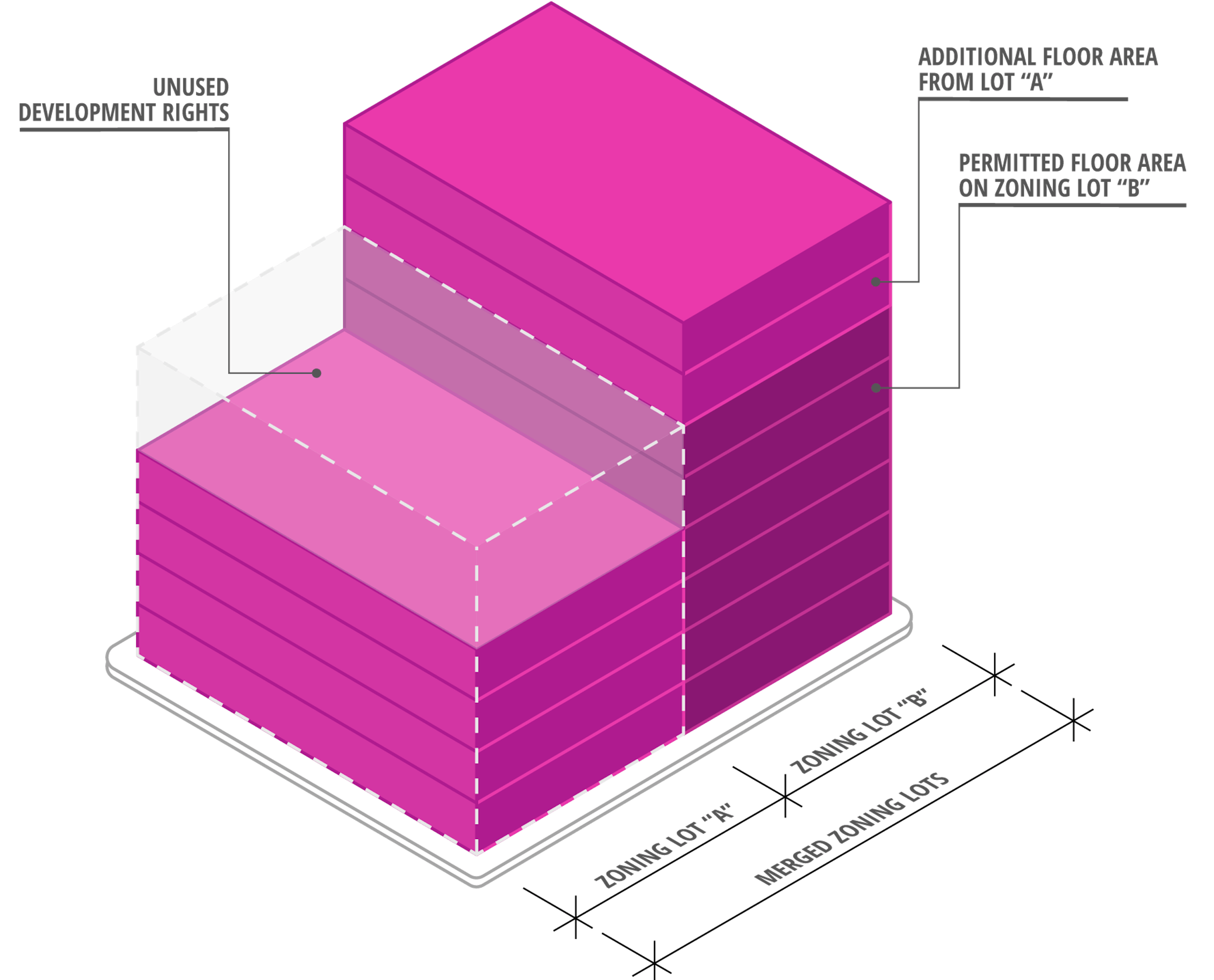New York City Air Rights
Development Site Advisors®
Air rights in New York City, a concept that has shaped the city’s skyline, refer to the unoccupied airspace above a property, often termed as a building’s “unused potential”. These rights are a valuable asset due to the scarcity of land and high demand. Property owners can generate income, finance improvements, or preserve historic landmarks by transferring or selling this unused potential. This also benefits developers who can build taller and more profitable structures in desirable locations. However, obtaining and utilizing air rights involves complex negotiations, legal agreements, and approvals from various agencies and stakeholders. The zoning regulations of each neighborhood, which may limit the height, density, or design of new developments, play a significant role. Public opposition and concerns from local officials about the impact of taller buildings on the cityscape, the environment, or the community can pose challenges to air rights transactions. Despite these challenges, air rights are likely to remain a significant factor in the development of New York City. They offer a way to accommodate new needs and opportunities without compromising the existing character and quality of the city. However, they also pose challenges and risks that require careful planning and regulation. The city must balance the interests of property owners, developers, and the public, ensuring that air rights are used in a way that benefits the city as a whole. The transfer of air rights serves a crucial purpose in urban planning, ensuring that new developments occur in neighborhoods with underbuilt lots, preventing overdevelopment and excessive density, thereby maintaining the quality of life within the city.
"Air rights in New York City represent more than just unused space; they are a vital component of urban real estate strategy, offering pathways for growth, innovation, and social contribution in one of the world's most dynamic urban environments.”
Lev Kimyagarov-Managing Principal, Co-Founder at Development Site Advisors®
The Transfer of Air Rights
In New York City, if a building is underbuilt according to the neighborhood’s zoning code, the unused airspace of this building can be acquired by a nearby development. This process allows the new development to construct a taller building, utilizing the unused potential of the underbuilt property.
Floor-to-Area Ratio (FAR)
A critical factor in regulating the height of new developments is the Floor-to-Area Ratio (FAR). The FAR is the maximum number of square feet that can be built on a site relative to the square footage of the lot. This ratio helps control the density and scale of developments within the city.
Zoning Regulations
Zoning Regulations Zoning regulations play a significant role in the application of air rights. These regulations prevent developers from building as high as they desire, maintaining the balance between urban development and quality of life.
Unused Development Rights
Unused Development Rights It is estimated that the five boroughs of New York City have approximately 3.7 billion square feet of unused development rights, also known as “air rights”.
Zoning Lot Merger
A zoning lot merger is a process where owners combine contiguous tax lots into a shared zoning lot, pooling together their development rights. This process allows for the efficient use of unused development rights, contributing to the unique architectural landscape of New York City.
Inclusionary Housing Air Rights
Inclusionary housing air rights, also known as bonus inclusionary development rights, are a unique aspect of New York City’s zoning and development regulations. They are designed to encourage the creation of affordable housing and can be used as a financing tool for the construction or rehabilitation of such housing.
To generate inclusionary air rights, an owner voluntarily creates permanent affordable housing through new construction, substantial rehabilitation, or preservation beyond what is otherwise required. The owner can then either use these rights to develop a larger building than is permitted as-of-right under the Zoning Resolution on the property containing the affordable housing, known as the generating site, or sell the inclusionary air rights to other owners within the same community district or an adjacent community district that is within half a mile of the generating site.
The Process of Obtaining and Transferring Inclusionary Housing Air Rights
The process of obtaining and transferring inclusionary housing air rights involves several steps:
1. Identify the Bonus Ratio: This is the ratio of bonus square feet generated by a specific project to affordable housing square feet preserved or created by the generating site. The bonus ratio can range from 1.25 to 3.5.
2. Deliver an Affordable Housing Plan to the New York City Department of Housing Preservation and Development (HPD): The generating site owner (the Applicant) delivers an affordable housing plan to HPD. This plan must include information regarding the Applicant’s ability to preserve affordable housing beyond what is otherwise required and identification of the administering agent that will ensure that the designated units are rented in accordance with the regulatory agreement that the Applicant will execute with HPD.
3. Transfer the Air Rights: If an owner is not incorporating the inclusionary air rights on its site, it can transfer the air rights to a receiving site that is either within the same community district or an adjacent community district that is within half a mile of the generating site. The air rights, referred to as “floor area compensation” in a sale transaction, are typically transferred pursuant to a purchase and sale agreement.
It’s important to note that inclusionary air rights projects can also take advantage of programs if the project independently satisfies each applicable program’s requirements. However, the process can be complex, and it’s recommended to consult with an attorney or a real estate professional to navigate the regulations.
At Development Site Advisors®, we know zoning® and monitor development activities closely. We look forward to being a valuable resource to you. We encourage you to reach out to us for a Sitestimate®, the proprietary development-focused valuation that will provide insights into the current value of your property as well as its potential value.

